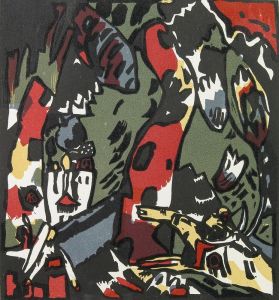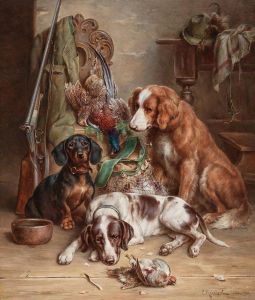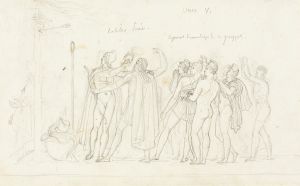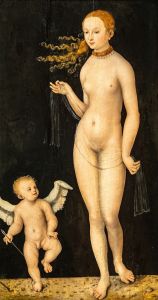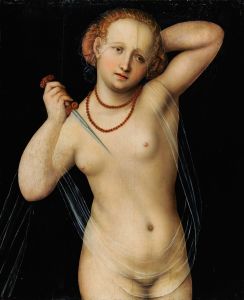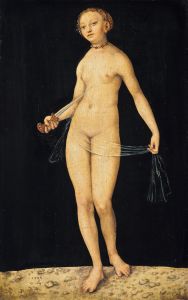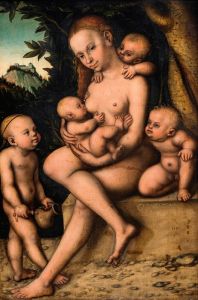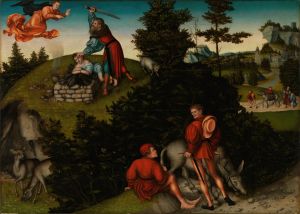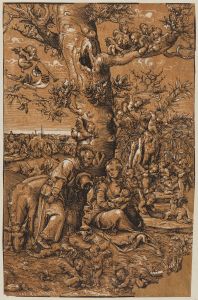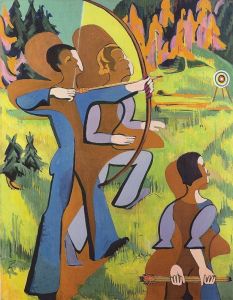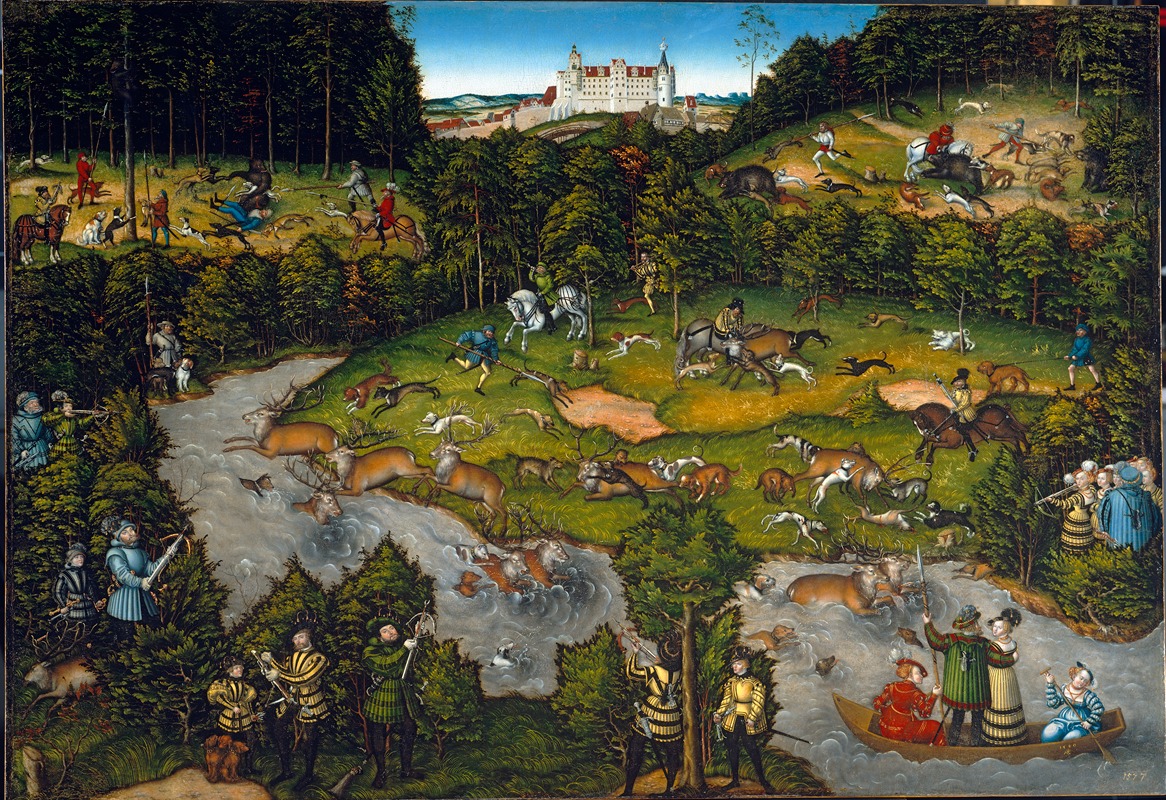
Hunting near Hartenfels Castle
A hand-painted replica of Lucas Cranach the Elder’s masterpiece Hunting near Hartenfels Castle, meticulously crafted by professional artists to capture the true essence of the original. Each piece is created with museum-quality canvas and rare mineral pigments, carefully painted by experienced artists with delicate brushstrokes and rich, layered colors to perfectly recreate the texture of the original artwork. Unlike machine-printed reproductions, this hand-painted version brings the painting to life, infused with the artist’s emotions and skill in every stroke. Whether for personal collection or home decoration, it instantly elevates the artistic atmosphere of any space.
"Hunting near Hartenfels Castle" is a painting by the renowned German Renaissance artist Lucas Cranach the Elder. Cranach, born in 1472 in Kronach, Franconia, was a prominent painter and printmaker who became one of the leading figures of the Northern Renaissance. He was known for his portraits, religious scenes, and mythological subjects, as well as his close association with Martin Luther and the Protestant Reformation.
The painting "Hunting near Hartenfels Castle" was created around 1540. It is an oil on panel work that depicts a lively and detailed hunting scene set against the backdrop of Hartenfels Castle, which is located in Torgau, Germany. Hartenfels Castle was an important residence of the Electors of Saxony and played a significant role during the Reformation period.
In the painting, Cranach masterfully captures the excitement and dynamism of the hunt. The composition is filled with numerous figures, both on horseback and on foot, engaged in various activities associated with hunting. The scene includes hunters with spears and bows, dogs chasing game, and the quarry itself, which includes deer and other animals. The artist's attention to detail is evident in the intricate depiction of the figures' clothing, the horses' tack, and the lush landscape that surrounds them.
One of the notable aspects of "Hunting near Hartenfels Castle" is Cranach's ability to convey movement and action. The figures are arranged in a way that leads the viewer's eye through the composition, creating a sense of depth and narrative. The use of vibrant colors and careful rendering of textures further enhance the realism and vitality of the scene.
Hartenfels Castle itself is prominently featured in the background of the painting. The castle's distinctive architecture, with its towers and fortifications, is rendered with precision, providing a historical context for the hunting scene. The inclusion of the castle not only situates the event geographically but also underscores the social and political significance of hunting as a pastime for the nobility.
Lucas Cranach the Elder's connection to the Saxon court is well-documented. He served as a court painter to the Electors of Saxony, including Frederick the Wise, John the Steadfast, and John Frederick I. His works often reflected the interests and activities of the court, and "Hunting near Hartenfels Castle" is a prime example of this relationship.
The painting is currently housed in the Gemäldegalerie Alte Meister (Old Masters Picture Gallery) in Dresden, Germany. It remains an important example of Cranach's skill as a painter and his ability to capture the cultural and social milieu of his time. "Hunting near Hartenfels Castle" not only showcases the artist's technical prowess but also provides valuable insight into the leisure activities and landscape of 16th-century Saxony.





